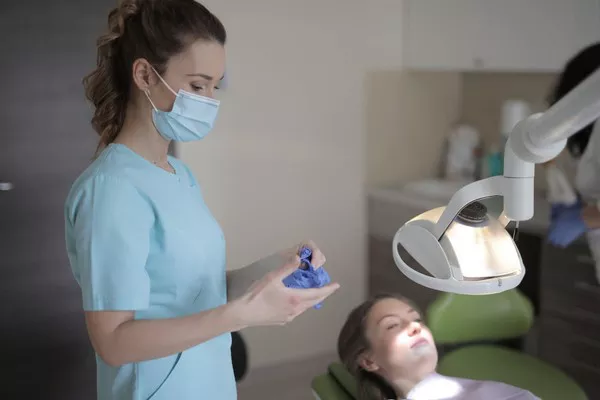A bright, white smile is often associated with confidence and good oral hygiene. As a result, teeth whitening has become increasingly popular among individuals seeking to enhance their smiles. One common method for achieving whiter teeth is through the use of teeth whitening strips. These thin, flexible strips are coated with a bleaching agent that helps remove stains from the teeth. However, many people wonder how long the effects of teeth whitening strips actually last. In this comprehensive guide, we will explore the lifespan of teeth whitening strips and provide valuable insights into maximizing their longevity.
Understanding Teeth Whitening Strips
What Are Teeth Whitening Strips?
Teeth whitening strips are small, adhesive strips that are designed to adhere to the front surface of the teeth. They are typically made of a flexible material called polyethylene, which is coated with a thin layer of hydrogen peroxide or carbamide peroxide—the active ingredients responsible for bleaching the teeth.
How Do Teeth Whitening Strips Work?
The active ingredients in teeth whitening strips penetrate the enamel of the teeth and break down the molecules that cause discoloration. This process effectively removes surface stains and restores the natural color of the teeth, resulting in a brighter smile.
Are Teeth Whitening Strips Safe?
Teeth whitening strips, when used as directed, are generally considered safe. However, it’s important to note that excessive or improper use may lead to tooth sensitivity, gum irritation, or uneven whitening. It is recommended to consult with a dentist before starting any teeth whitening regimen to ensure it is suitable for individual needs and dental health.
Factors Influencing the Lifespan of Whitening Strips
Quality of the Product
The quality of teeth whitening strips can vary among different brands and manufacturers. Higher-quality products often contain a higher concentration of the active bleaching agent, which may result in more noticeable and longer-lasting results. It is advisable to choose reputable brands that have undergone rigorous testing and have positive user reviews.
Ingredients Used
The type and concentration of bleaching agents used in teeth whitening strips can affect their efficacy and lifespan. Hydrogen peroxide and carbamide peroxide are commonly used as active ingredients. Hydrogen peroxide tends to provide faster results but may have a shorter effect duration compared to carbamide peroxide. However, the actual lifespan of teeth whitening strips also depends on other factors, such as the formulation and delivery system used by the manufacturer.
Frequency of Use
The frequency of using teeth whitening strips can impact their lifespan. Most manufacturers provide guidelines on how frequently the strips should be applied, typically ranging from once a day for a specific duration (e.g., 30 minutes) to twice a day for shorter durations (e.g., 5-10 minutes). Following the recommended usage instructions is crucial to avoid overuse or misuse, which could lead to adverse effects or prematurely diminish the effectiveness of the strips.
Oral Hygiene Practices
Maintaining good oral hygiene practices can contribute to the longevity of teeth whitening strips. Regular brushing, flossing, and rinsing with mouthwash help remove surface stains and prevent the build-up of plaque, which can hinder the effectiveness of the whitening strips. Additionally, avoiding habits such as smoking or consuming staining substances like coffee, tea, or red wine can help extend the lifespan of the whitening effects.
Diet and Lifestyle Habits
Certain dietary and lifestyle habits can impact the lifespan of teeth whitening strips. Consuming acidic foods and beverages, such as citrus fruits or soda, can weaken the enamel and make teeth more susceptible to staining. Similarly, habits like bruxism (teeth grinding) or chewing on hard objects can cause the strips to shift or become less effective over time. It is advisable to avoid these habits and maintain a balanced diet for long-lasting whitening results.
Average Lifespan of Teeth Whitening Strips
Manufacturer Guidelines
The average lifespan of teeth whitening strips can vary depending on the specific product and its formulation. Most manufacturers provide an estimate of how long the whitening effects should last based on their product’s intended usage. Typically, the results are expected to last several months, ranging from three to six months. However, individual experiences may vary due to factors such as genetics, oral hygiene, and lifestyle habits.
User Experiences
Users’ experiences with teeth whitening strips can provide valuable insights into their lifespan. Some individuals report seeing noticeable results within a few days of using the strips and maintain satisfactory whitening effects for several months. Others may experience shorter-lasting results or find that the effects gradually fade over time.
Why are my teeth more yellow after whitening strips?
There can be several reasons why your teeth may appear more yellow after using whitening strips. It’s essential to understand that the results of teeth whitening can vary from person to person, and individual circumstances may contribute to this phenomenon. Here are some possible reasons why your teeth may appear more yellow after whitening strips:
Temporary Staining:
After using whitening strips, it is common for teeth to go through a temporary phase where they may appear slightly yellow or blotchy. This is because the whitening process can temporarily dehydrate the teeth, making them appear more translucent. As a result, the underlying dentin, which naturally has a yellowish tone, becomes more visible. This effect is typically temporary and should improve as the teeth rehydrate.
Unfinished Whitening Process:
Teeth whitening is a gradual process, and it may take multiple applications or sessions to achieve the desired level of whiteness. If you’re not seeing the results you expected after using whitening strips, it’s possible that your teeth require additional treatments to reach the desired shade. Following the recommended usage guidelines and completing the full course of treatment is crucial for optimal results.
Inconsistent Whitening:
Uneven application or inadequate coverage of the teeth with the whitening strips can lead to uneven results. If certain areas of your teeth receive less exposure to the whitening agents than others, those areas may appear more yellow in comparison. It’s important to ensure that the strips are applied evenly and cover the entire front surface of each tooth for consistent whitening.
Existing Tooth Discoloration:
Teeth whitening strips are effective at removing extrinsic stains caused by external factors like food, beverages, or tobacco use. However, they may not be as effective on intrinsic stains that originate from within the teeth. Intrinsic stains can be caused by factors such as genetics, certain medications, or dental conditions. If your teeth have significant intrinsic stains, the whitening strips may not be able to fully eliminate them, resulting in a more yellow appearance.
Post-Whitening Care:
Maintaining good oral hygiene and following post-whitening care instructions are crucial for prolonging the results of teeth whitening. If you neglect proper oral care practices, such as regular brushing, flossing, and rinsing, or continue habits that contribute to tooth discoloration like smoking or consuming staining substances, your teeth may gradually revert to their previous shade, making them appear more yellow.
If you’re concerned about the color of your teeth after using whitening strips, it is advisable to consult with a dental professional. They can assess your specific situation, provide personalized recommendations, and discuss alternative teeth whitening options that may better address your needs.
Related Topics:





























